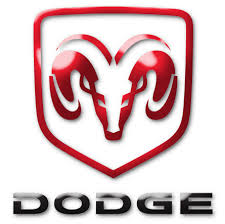Caliber L4-2.4L (2009)

Alignment: Service and Repair
Wheel Alignment
WHEEL ALIGNMENT
PRE-WHEEL ALIGNMENT INSPECTION
Before any attempt is made to change or correct the wheel alignment, the following inspection and necessary corrections must be made to the vehicle to
ensure proper alignment.
1. Verify the fuel tank is full of fuel. If the fuel tank is not full, the reduction in weight will affect the curb height of the vehicle and the alignment
specifications.
2. The passenger and luggage compartments of the vehicle should be free of any load that is not factory equipment.
3. Check the tires on the vehicle. The tires are to be inflated to the recommended air pressure. All tires must be the same size and in good condition
with approximately the same tread wear.
4. Check the front tire and wheel assemblies for excessive radial runout.
5. Inspect all suspension component fasteners for looseness and proper torque.
6. Inspect the lower front ball joints and all steering linkage for looseness and any sign of wear or damage.
7. Inspect the rubber bushings on all the suspension components for signs of wear or deterioration. If any bushings show signs of wear or
deterioration, they should be replaced prior to aligning the vehicle.
8. Check vehicle curb height to verify it is within specifications. See:
WHEEL ALIGNMENT SETUP
1. Position the vehicle on an alignment rack.
2. Install all required alignment equipment on the vehicle, per the alignment equipment manufacturer's instructions. On this vehicle, a four-wheel
alignment is recommended.
NOTE: Prior to reading the vehicle's alignment readouts, the front and rear of vehicle should be jounced. Induce jounce (rear first, then
front) by grasping the center of the bumper and jouncing each end of vehicle an equal number of times. The bumper should always be
released when vehicle is at the bottom of the jounce cycle.
3. Read the vehicle's current front and rear alignment settings. Compare the vehicle's current alignment settings to the vehicle specifications for
camber, caster and toe-in. See: Specifications/Wheel Alignment
REAR CAMBER
Rear camber settings on this vehicle are determined at the time the vehicle is designed, by the location of the vehicle's suspension components. This is
referred to as Net Build. The result is no required adjustment of camber after the vehicle is built or when servicing the suspension components. Thus,
when performing a wheel alignment, rear camber is not considered an adjustable angle.
CAUTION: Do not attempt to adjust the vehicle's wheel alignment by heating or bending any of the suspension components.
FRONT CAMBER AND CASTER
Front camber and caster settings on this vehicle are determined at the time the vehicle is designed, by the location of the vehicle's suspension
components. This is referred to as Net Build. The result is no required adjustment of camber and caster after the vehicle is built or when servicing the
suspension components. Thus, when performing a wheel alignment, caster and camber are not normally considered adjustable angles but some
adjustment can be made. Camber and caster should be checked to ensure they meet vehicle specifications. See: Specifications/Wheel Alignment
If individual front camber or caster is found not to meet alignment specifications, each can be adjusted by shifting the front crossmember or by using an
available service adjustment bolt package. If an adjustment bolt package installation is necessary, inspect the suspension components for any signs of
damage or bending first.
CAUTION: Do not attempt to adjust the vehicle's wheel alignment by heating or bending any of the suspension components.
ADJUSTMENT BY SHIFTING CROSSMEMBER
CAUTION: Always use care when shifting crossmember to avoid damaging other components on the vehicle.
1. Loosen the four bolts fastening the front crossmember to the frame just enough to allow movement of the crossmember. See: Body and
Frame/Frame/Cross-Member/Service and Repair/Crossmember - Removal
2. Loosen the bolts fastening the fore/aft crossmember to the frame just enough to allow movement of the crossmember. See: Body and
Frame/Frame/Cross-Member/Service and Repair/Crossmember - Removal
